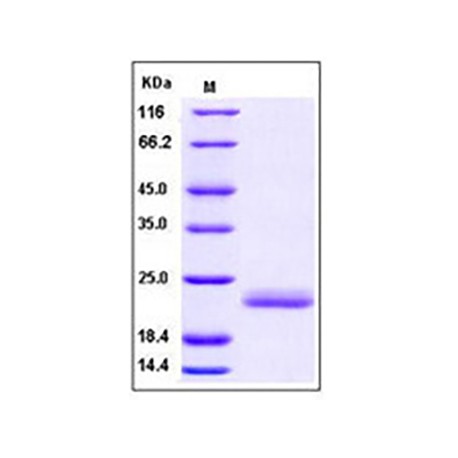No products
Product successfully added to your shopping cart
There are 0 items in your cart. There is 1 item in your cart.
Proteins and Enzymes
- Protein Control Ligand
- Pathway Inhibitors
- Enzyme Inhibitors
- Kinase Inhibitors
- Protease
- Synthase
- p18
- p38
- p53
- p70
- p90
- Peptidase
- Carboxyl and Decarboxylases
- Ceramide Turnover Enzymes
- Chromatin Modifying Enzymes
- Cyclic Nucleotide Turnover Enzymes
- Glycerophospholipid Turnover Enzymes
- Hydroxylases
- Ubiquitin-Activating Enzyme
- Adenosine Deaminase
- Clathrin
- Nuclease
- p68
- ACE
- COX
- DHFR
- Neprilysin
- NF-κB
- RAF
- RAS
- Reductase
- ROR
- Topoisomerase
- Transferase
- Protein Inhibitors
- Transporter Inhibitors
- Cell Inhibition
- Synthase
- Receptor Tyrosine Phosphatases (RTP)
- AChE
- Peptidase
- Autophagy
- Toll-Like Receptor (TLR)
- Enzyme Inhibitors
- Function Modulators
- Activators
- G Protein-Coupled Receptor Ligands
- 5HT Receptors
- Adrenoceptor
- Angiotensin Receptor
- Cannabinoid Receptors
- CCK Receptors
- DA Receptors
- EAA Receptors
- Ghrelin Receptors
- GABA Receptors
- Histamine Receptors
- Leukotriene Receptors
- Metabotropic Glutamate Receptors
- Motilin Receptors
- Muscarinic Receptor
- Neuropeptide Receptors
- Opioid Receptors
- Orexin Receptors
- Orphan Receptors
- Prostanoid Receptors
- Proteinase-Activated Receptors
- Purinergic Receptors
- Ryanodine receptor
- Sigma Receptors
- Thrombin Receptor
- Vaniloid Receptor
- VIP and PACAP Receptors
- Neurotensin Receptors
- Urotensin Receptor
- Imidazoline receptor
- SMO Receptors
- Apelin Receptor
- β-arrestin/β2-adaptin
- KDM4
- Glucocorticoid Receptor
- Laminin Receptor
- AHR
- Amylin Receptor
- Bombesin Receptor
- Bradykinin Receptor
- CFTR
- CGRP Receptor
- CRFR
- Endothelin Receptor
- Ephrin Receptor
- Farnesoid X receptor (FXR)
- Glucagon Receptor
- Nuclear Receptor Ligands
- GDNF Receptors
- TNF Receptors
- Transcription Factors
- Chemokines
- Cytokine Receptors
- Biomarkers and Buffer Solutions
- Molecular Probes
- Stem Cell Research
- Alzheimer's Disease
- Apoptosis
- Cancer Research
- Epigenetics
- Metabolites
- PET/SPECT Imaging Precursors
- Customized Screening Library
- Ultra Pure Pharmacological Standard
- Tissue Microarray (TMA)
- Proteins and Antibodies
- Primary Cells
- ELISA KIT
- Natural Products
- Lab Equipments
- Humanized Mice for PDX Platform
- Rare Chemicals
- Custom Synthesis
- Antibacterial
- Antifungal
- Antioxidant
- Antiviral
- Molecular Glues
- PROTAC Linker
- SARS-CoV
Human IL-1 alpha / IL1A / IL1F1 Protein
10128-HNCH
Activity: (1) Measured in a cell proliferation assay using D10.G4.1 mouse helper T cells. The ED50 for this effect is typically 0.2-1 ng/mL. (2) Measured by its ability to induced Interferon gamma secretion by human natural killer lymphoma NK-92 cells. The ED50 for this effect is typically 0.07-0.35ug/mL.
Please ask for quote for unit smaller than 1 mg
Molarity Calculation Cart®
HOW TO ORDER
Data sheet
| Molecular Weight | The recombinant human IL1α consists of 159 amino acids and has a predicted molecular mass of 18 kDa. As a result of glycosylation, the apparent molecular mass of rhIL1α is approximately 22 kDa in SDS-PAGE under reducing conditions. |
| Storage Condition | Samples are stable for up to twelve months from date of receipt at -70℃. Store it under sterile conditions at -20℃ to -80℃. It is recommended that the protein be aliquoted for optimal storage. Avoid repeated freeze-thaw cycles. |
| Purity | 95% as determined by SDS-PAGE |
More info
Protein Construction: The processed form of human IL1α (NP_000566.3) (Ser 113-Ala 271) was expressed and purified.
Formulation: Lyophilized from sterile 50mM Tris, 100mM NaCl, pH 8.01. Normally 5% - 8% trehalose, mannitol and 0.01% Tween80 are added as protectants before lyophilization. Specific concentrations are included in the hardcopy of COA.2. Please contact us for any concerns or special requirements.Please refer to the specific buffer information in the hard copy of CoA.
Reconstitution: A hardcopy of COA with reconstitution instruction is sent along with the products. Please refer to it for detailed information.
IL-1 alpha Background Information: IL-1 alpha is a member of the interleukin 1 cytokine family. Cytokines are proteinaceous signaling compounds that are major mediators of the immune response. They control many different cellular functions including proliferation, differentiation and cell survival/apoptosis but are also involved in several pathophysiological processes including viral infections and autoimmune diseases. Cytokines are synthesized under various stimuli by a variety of cells of both the innate (monocytes, macrophages, dendritic cells) and adaptive (T- and B-cells) immune systems. Cytokines can be classified into two groups: pro- and anti-inflammatory. Pro-inflammatory cytokines, including IFNgamma, IL-1, IL-6 and TNF-alpha, are predominantly derived from the innate immune cells and Th1 cells. Anti-inflammatory cytokines, including IL-1, IL-4, IL-13 and IL-5, are synthesized from Th2 immune cells. IL-1 alpha is a pleiotropic cytokine involved in various immune responses, inflammatory processes, and hematopoiesis. It is produced by monocytes and macrophages as a proprotein, which is proteolytically processed and released in response to cell injury, and thus induces apoptosis. IL-1 alpha stimulates thymocyte proliferation by inducing IL-2 release, B-cell maturation and proliferation, and fibroblast growth factor activity.
References:
- Nicklin MJ,et al. (1994) A physical map of the region encompassing the human interleukin-1 alpha, interleukin-1 beta, and interleukin-1 receptor antagonist genes. Genomics. 19(2):382-4.
- March CJ, et al. (1985) Cloning, sequence and expression of two distinct human interleukin-1 complementary DNAs. Nature. 315(6021):641-7.
- Bankers-Fulbright JL, et al. (1996) Interleukin-1 signal transduction. Life Sci. 59(2):61-83.
- Dinarello CA, et al. (1997) Induction of interleukin-1 and interleukin-1 receptor antagonist. Semin Oncol. 24 (3 Suppl 9):S9-81-S9-93.



